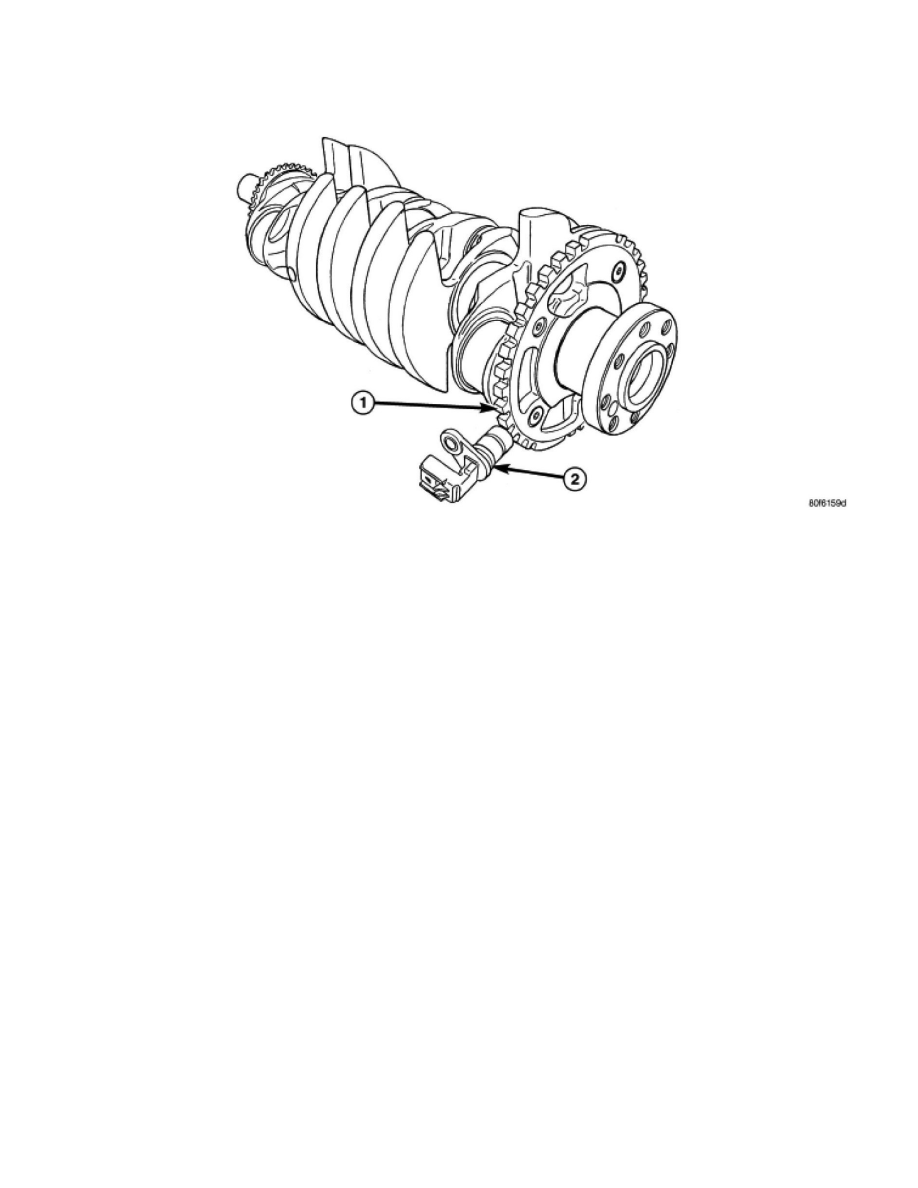Sebring Sedan L4-2.4L (2007)

Crankshaft Position Sensor: Description and Operation
Operation
OPERATION
The Crankshaft Position (CKP) sensor is a Hall-effect sensor. The PCM sends approximately 5 volts to the sensor, this voltage is required to operate the
Hall-effect chip and the electronics inside the sensor. A ground for the sensor is provided through the sensor return circuit of the PCM. The input to the
PCM occurs on a 5 Volt output reference circuit.
The notches generate pulses from high to low in the crankshaft position sensor output voltage. When a metal portion of the counterweight aligns with the
crankshaft position sensor, the sensor output voltage goes low (less than 0.5 volts). When a notch aligns with the sensor, voltage goes high (5.0 volts).
As a group of notches pass under the sensor, the output voltage switches from low (metal) to high (notch) then back to low.
If available, an oscilloscope can display the square wave patterns of each voltage pulses. From the width of the output voltage pulses, the PCM calculates
engine speed. The width of the pulses represent the amount of time the output voltage stays high before switching back to low. The period of time the
sensor output voltage stays high before switching back to low is referred to as pulse width. The faster the engine is operating, the smaller the pulse width
on the oscilloscope.
Each group of timing reference notches, the first notch represents 69 degrees before top dead center (BTDC). The second notch represents 49 degrees
BTDC. The third notch represents 29 degrees. The last notch in each set represents 9 degrees before top dead center (BTDC). There is also a notch at
11 degrees before top dead center (BTDC).
